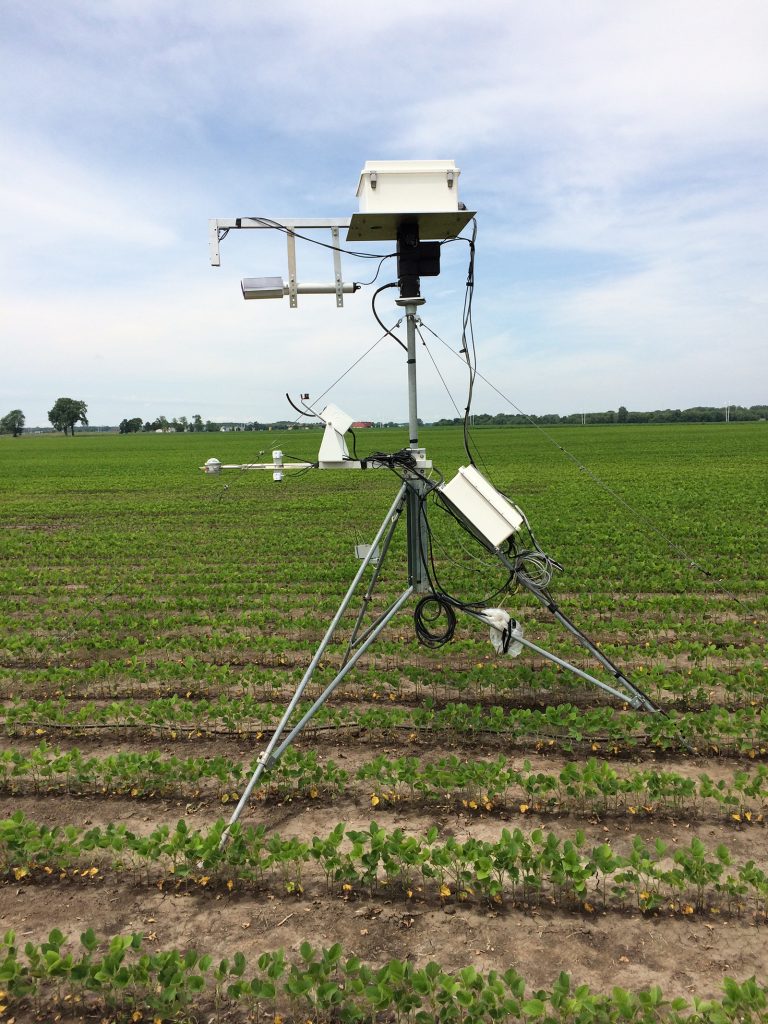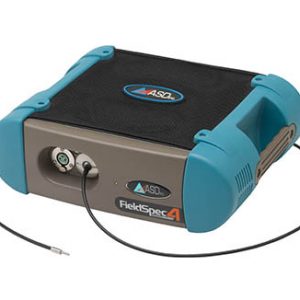Model Behaviour with the ASD FieldSpec 4
The following article was written by Analytik partner Malvern Panalytical and featured in the GeoConnexion’s international magazine Nov/Dec edition.
As global temperatures continue to climb, research into climate change and its impact on the planet has taken on increased importance. Climate models simulate the interactions of important climate drivers, helping scientists to work through complicated problems and understand complex systems. However, because the atmosphere, plants and soils play important roles in the Earth’s carbon and water cycles, a better understanding of atmosphere-biosphere interactions near the surface is crucial for the accurate forecasting of future climate. As a result, researchers need to answer the question: ‘How do local-scale phenomena relate to large-scale phenomena and vice versa?’ One organisation working to answer that question is Argonne National Laboratory in the US. Argonne’s EcoSpec project aims to provide insights into local scale dynamics that can be useful to regional and global scale climate models. The team of remote-sensing scientists, ecologists, electrical and mechanical engineers and computer scientists use agricultural crops such as soybean, corn and alfalfa to investigate how plants respond and contribute to local land surface processes.

Part of this process involves collecting a wide range of data, including hyperspectral remote sensing imagery, meteorological measurements and biological information. The team investigate patterns and associations between meteorological and biological measurements of the ecosystem corresponding to photosynthesis and respiration and hyperspectral data of the land surface. Identifying patterns and associations will help Argonne to link hyperspectral reflectance signatures with plant activity and improve the understanding of the relationship between ecosystems and climate

Argonne’s EcoSpec EC tower system
The EcoSpec team has developed an optical tower system to collect high temporal frequency hyperspectral reflectance measurements of land surfaces. The tower is equipped with multiple sensors that measure hyperspectral reflectance in the 350-2,500nm range, sky and land-surface temperatures, total incoming radiation and light components(direct versus diffused). Each sensor provides unique optical information about the land surface, including vegetation and exposed soil. A spectrometer and RGB camera are housed in the box mounted on the top of the tower. Rotating at 300º, it poses at 12 positions, collecting spectral measurements and photos of the land surface. The system autonomously collects nearly every minute of the day, from dawn to dusk throughout the growing season, and wirelessly streams data to the server at Argonne. To track interactions between plants and their surroundings, and to better understand climate change through the spectral response of plants, the EcoSpec team uses an ASD FieldSpec 4 Standard-Res spectroradiometer, which is a field-portable, full-range (350-2,500nm), visible near-infrared (VNIR) spectroradiometer. VNIR technology is non-destructive, requires no sample preparation and can be used to analyse multiple constituents in a single scan. The instrument affords a cost-effective means to gather critical field measurements in the form of spectra; this then allows for spectral libraries(which act as a template for material identification) to be built. Spectral libraries include entries for materials that significantly contribute to the mixed spectral signatures observed in hyperspectral imagery
Argonne’s EcoSpec team is taking the data they are collecting and developing a model for determining photosynthesis by incorporating methodology that integrates the effects of temporally varying limiting factors influencing photosynthesis and respiration, ultimately exploring the power of optical information to predict the dynamics of ecosystem functions through tower-based hyperspectral remote sensing in conjunction with carbon and water flux and plant physical measurements. Their findings are providing an opportunity to investigate how intra-annual variations in those factors affect ecosystem fluxes without physically measuring activities of plants and soil on the ground. Based on preliminary analysis, standard error between predictive models developed by the team and actual observation is relatively low,suggesting that translating observations of interest in to a set of proper ties that have spectral responses could provide a new approach for data collection, which helps a comprehensive understanding of how the atmosphere, plants, land and oceans all interacts with each other.

From local to global
There is plenty of uncertainty surrounding climate models. Through combining and linking hyperspectral imagery and analysis with VNIR
spectral data collected with the ASD FieldSpec spectroradiometer, Argonne National Laboratory’s EcoSpec project is observing what is happening
today at the local scale to facilitate more accurate forecasting and improved future climate models at a larger scale.
Ultimately, as this kind of sensing matures with the help of projects such as EcoSpec, the findings from the research will provide the fundamental understanding that can be used for satellite measurements and can be incorporated into large-scale climate models, ultimately informing policy decisions on a global scale
Malvern Panalytical’s ASD FieldSpec range
The ability to collect solar reflectance, radiance, irradiance and reflectance spectral data, means ASD’s spectroradiometers (Standard-Res, Hi-Res and Wide-Res) are ideal for applications in remote sensing, oceanography, ecology, forestry, plant physiology and geology.
Find out more about Malvern Panalytical’s ASD range by clicking the button below:

Article references:
- Geoconnexion Nov/Dec 2018



